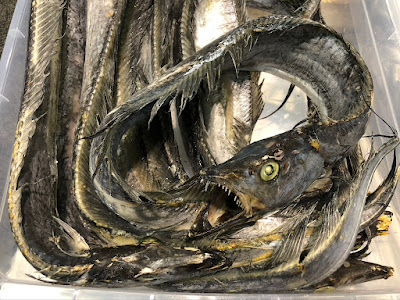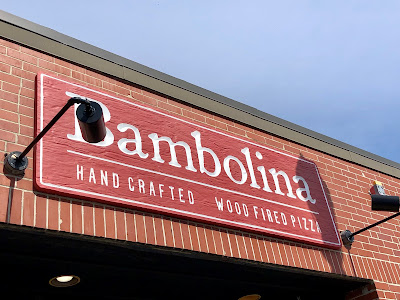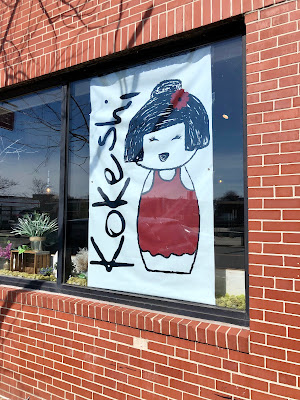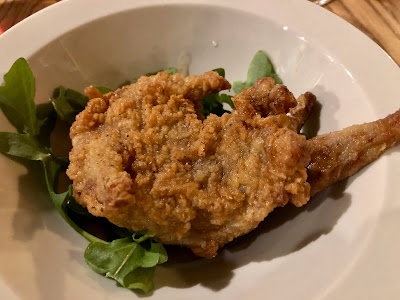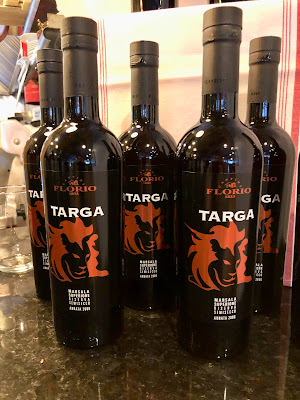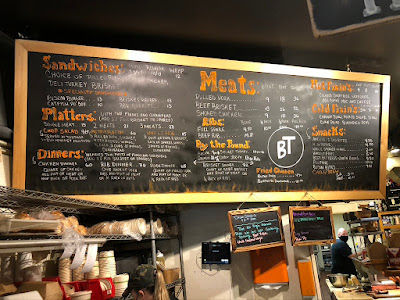******************************************************
1) Experience Croatian wines at an upcoming Wine Pairing Dinner at Brasserie on Tuesday, April 5 at 6pm. Chefs Vince Carideo and Nick Intonti will be serving a five-course menu of Croatian-inspired small plates to pair with five Croatian wines. The founders of Croatian Premium Wine will be on-site to present the wines, share their origins, and help celebrate the rich culture of Croatian winemaking.
Menu
--Smoked Shellfish Salad (Escabeche, Citrus, plum)
Malvazija Istarska 2020 Fakin
--Wild Mushroom (Green garlic, Truffle, Creme Fraiche)
--Wild Mushroom (Green garlic, Truffle, Creme Fraiche)
Teran 2017 Fakin, Il Primo
--Braised Rabbit (Red Wine, Polenta, Arrowhead Cabbage)
--Braised Rabbit (Red Wine, Polenta, Arrowhead Cabbage)
Plavac Mali Barrique 2016 Terra Madre
--Duck Confit Leg (Seared Breast, Cherry)
--Duck Confit Leg (Seared Breast, Cherry)
Plavac Mali 2016 Komarna 7
--Pot de Creme (Orange Blossom, Muscat grapes, Lavender)
--Pot de Creme (Orange Blossom, Muscat grapes, Lavender)
Muskat Momjanski 2020 Kabola
Note: Menu is subject to change according to the chefs' discretion
The dinner costs $120 per person and Reservations can be made at Eventbrite.
2) Nightshade Noodle Bar is starting a new 5 Course Tasting Menu on Wednesday evenings for $50/per person. Normal dinner service will also be available on Wednesdays. The Wednesday Tasting menu will feature some "new hyper-seasonal, hella springy dishes" which Chef Rachel Miller has been creating, as well as some Nightshade staples. Their Beverage Director, Alex, will feature a few special bottles of wine to accompany the Tasting Menu.
Chef Miller never posts or print their Tasting Menus, as they are intended to be blind), but she is making an exception for the Wednesday Tasting Menu. Every Wednesday morning, from 10am-11am, she will post the tasting menu on Instagram and Facebook, with a link to make Reservations. There are a limited amount of Reservations available each Wednesday so book early to guarantee a spot.
Note: Menu is subject to change according to the chefs' discretion
The dinner costs $120 per person and Reservations can be made at Eventbrite.
2) Nightshade Noodle Bar is starting a new 5 Course Tasting Menu on Wednesday evenings for $50/per person. Normal dinner service will also be available on Wednesdays. The Wednesday Tasting menu will feature some "new hyper-seasonal, hella springy dishes" which Chef Rachel Miller has been creating, as well as some Nightshade staples. Their Beverage Director, Alex, will feature a few special bottles of wine to accompany the Tasting Menu.
Chef Miller never posts or print their Tasting Menus, as they are intended to be blind), but she is making an exception for the Wednesday Tasting Menu. Every Wednesday morning, from 10am-11am, she will post the tasting menu on Instagram and Facebook, with a link to make Reservations. There are a limited amount of Reservations available each Wednesday so book early to guarantee a spot.




